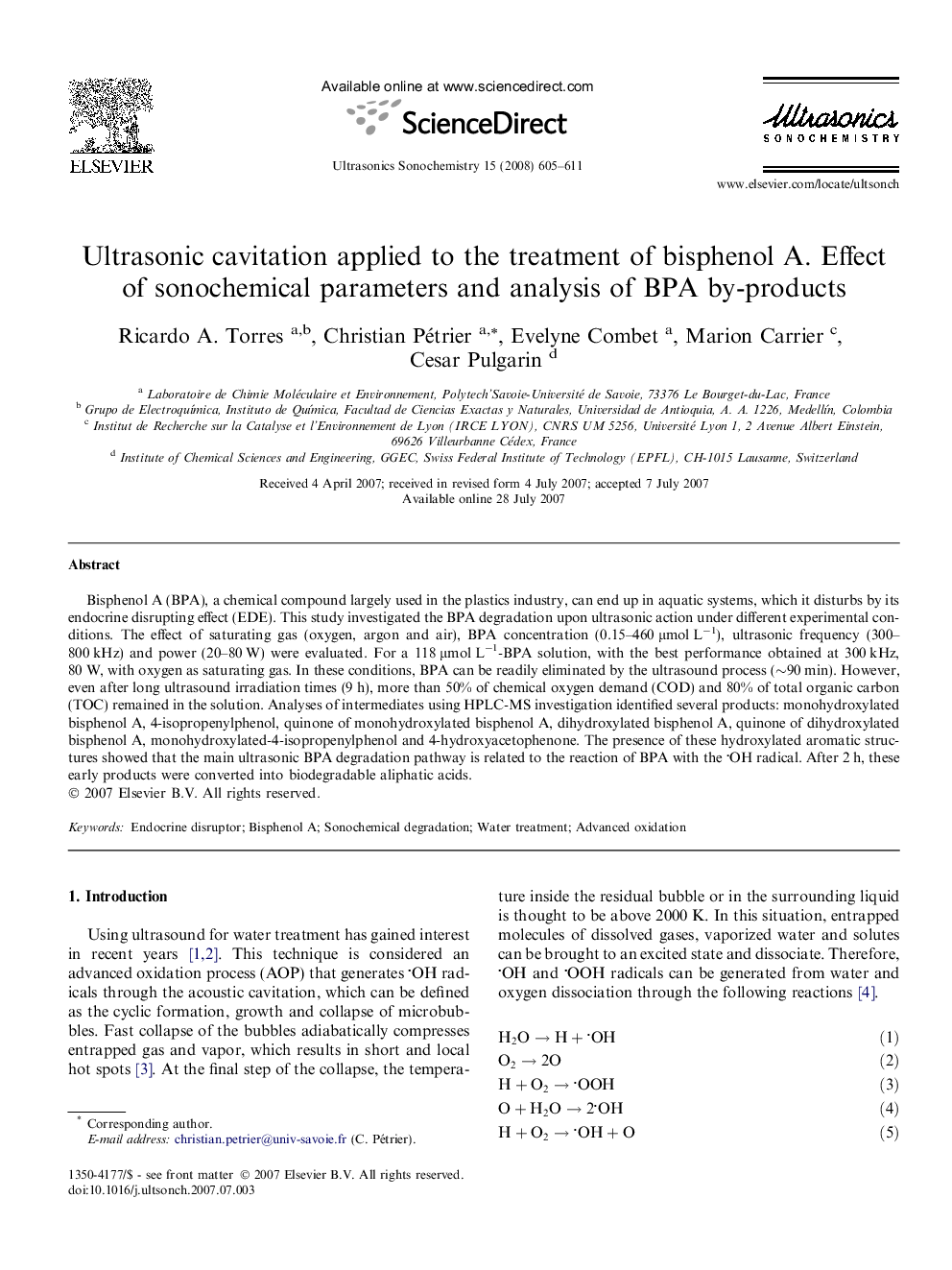| کد مقاله | کد نشریه | سال انتشار | مقاله انگلیسی | نسخه تمام متن |
|---|---|---|---|---|
| 1266638 | 972284 | 2008 | 7 صفحه PDF | دانلود رایگان |

Bisphenol A (BPA), a chemical compound largely used in the plastics industry, can end up in aquatic systems, which it disturbs by its endocrine disrupting effect (EDE). This study investigated the BPA degradation upon ultrasonic action under different experimental conditions. The effect of saturating gas (oxygen, argon and air), BPA concentration (0.15–460 μmol L−1), ultrasonic frequency (300–800 kHz) and power (20–80 W) were evaluated. For a 118 μmol L−1-BPA solution, with the best performance obtained at 300 kHz, 80 W, with oxygen as saturating gas. In these conditions, BPA can be readily eliminated by the ultrasound process (∼90 min). However, even after long ultrasound irradiation times (9 h), more than 50% of chemical oxygen demand (COD) and 80% of total organic carbon (TOC) remained in the solution. Analyses of intermediates using HPLC-MS investigation identified several products: monohydroxylated bisphenol A, 4-isopropenylphenol, quinone of monohydroxylated bisphenol A, dihydroxylated bisphenol A, quinone of dihydroxylated bisphenol A, monohydroxylated-4-isopropenylphenol and 4-hydroxyacetophenone. The presence of these hydroxylated aromatic structures showed that the main ultrasonic BPA degradation pathway is related to the reaction of BPA with the OH radical. After 2 h, these early products were converted into biodegradable aliphatic acids.
Journal: Ultrasonics Sonochemistry - Volume 15, Issue 4, April 2008, Pages 605–611